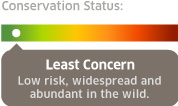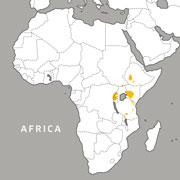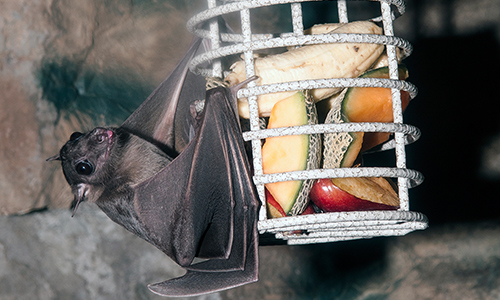Appearance:
These bats have wolf-like faces and fur that is typically one color, but patterns in fur are seen occasionally.
Size:
Adults weigh up to 12 ounces, with a length of up to 8 inches and a wingspan of up to 30 inches.
Diet:
Fruits and nectar
Reproduction:
Breeding season is year-round, and bats typically have two litters per year, one pup per litter.
Gestation:
Bats typically have one young per gestation period. Gestation has been estimated at 105 days to 210 days.
Behavior:
Ruwenzori long-haired fruit bats are one of only a few species of fruit bats that echolocate to navigate in low light conditions. They create a series of clicks using the back of their tongue.
Fruit bats don't eat their fruit whole, but instead chew it up to suck out the juices and then spit out the pulp.
These bats will form colonies of up to 300 bats, roosting during the day in caves.
Role in their habitat:
Often considered a “keystone species,” bats play a critical role in the ecosystem in terms of insect control, plant pollination, seed dissemination and fertilization. Their loss would have serious consequences for the ecosystems to which they belong and health ramifications for humans as well. A single little brown bat, the most common bat species in the U.S., can eat up to thousands of insects in one night, providing protection against mosquito-borne illnesses and potential crop pests.
Habitat/range:
East Africa and Central Africa, found in mountainous tropical forests
Median life expectancy:
10-13 years in the wild
Threats in wild:
Habitat loss, bushmeat hunting
You can help!
Bats are important to many eco-systems, including ones local to Boston. Educate yourself and your friends/family about bats to end the stigma behind them. You can even build/purchase bat boxes to encourage local bats to roost near you!
Fun facts:
- These bats are pollinators because they travel between flowers and assist in seed dispersal while flying.




